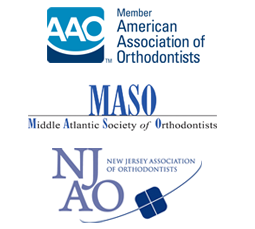Dental Update
Call Giegerich Orthodontics at 609.652.1900 or fill out our online Request an Appointment form to schedule a complimentary consultation with us.
Nature, Causes and Classifications of Malocclusion
Ideally, your upper and lower teeth should bite and fit together properly. The upper teeth should be slightly over the lower teeth; the molars should fit properly with the grooves of the opposing molars. Moreover, your upper and lower teeth should align properly keep your lips, cheeks or tongue from being bitten. Unfortunately, some people suffer the condition known as malocclusion, or misalignment of teeth and jaws.
Malocclusion is a common problem that may be dental in origin if it involves misalignment of the teeth; or skeletal in origin if it involves misalignment of the jaw. In certain cases, it may also be a combination of both teeth and jaw misalignment. This problem may be caused by any of the following:
- Thumb-sucking or tongue-thrusting
- Use of pacifier beyond 3 years of age
- Impacted or abnormally shaped teeth, resulting in teeth overcrowding
- Ill-fitting dental crowns, fillings and appliances, including braces and retainers
- Serious facial injury resulting in misalignment of the jaw
Malocclusion is categorized into three classes. Class 1 is the most common. Here, the bite is normal but there is a slight overlapping of the lower teeth over the upper teeth. In Class 2, there is a severe overlapping of the upper teeth and jaw over their lower counterparts. This condition is commonly referred to as overbite. Lastly, Class 3 involves protrusion of the lower jaw and teeth, causing them to jut more forward over the upper jaw and teeth. This is commonly known as underbite.
Archive
- 2013-03-21
- 2013-04-21
- 2013-05-21
- 2013-06-21
- 2013-07-21
- 2013-08-21
- 2013-09-21
- 2013-10-21
- 2013-11-21
- 2013-12-21
- 2014-01-21
- 2014-02-21
- 2014-03-21
- 2014-04-21
- 2014-05-21
- 2014-06-21
- 2014-07-21
- 2014-08-21
- 2014-09-21
- 2014-10-21
- 2014-11-21
- 2014-12-21
- 2015-01-21
- 2015-02-21
- 2015-03-21
- 2015-04-21
- 2015-05-21
- 2015-06-21
- 2015-07-21
- 2015-08-21
- 2015-09-21
- 2015-10-21
- 2015-11-21
- 2015-12-21
- 2016-01-21
- 2016-02-21
- 2016-03-21
- 2016-04-21
- 2016-05-21
- 2016-06-21
- 2016-07-21
- 2016-08-21
- 2016-09-21
- 2016-10-21
- 2016-11-21
- 2016-12-21
- 2017-01-21
- 2017-02-21
- 2017-03-21
- 2017-04-21
- 2017-05-21
- 2017-06-21
- 2017-07-21
- 2017-08-21
- 2017-09-21
- 2017-10-21

















